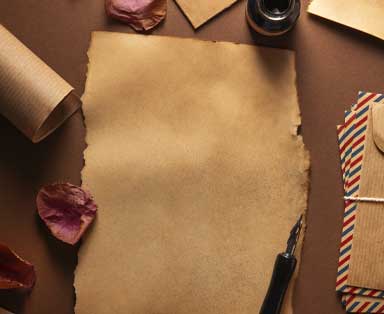Dec 04, 2023 / By Hiruni Hansika / in Ecommerce
A History of Paper: From Papyrus to Modern Stationery
Paper is a necessary component of daily life and is crucial for communication, ideas, and thinking. Have you noticed the remarkable journey that trendy paper products went on its way from ancient papyrus?
We invite you to join us to explore the rich history of this essential medium...

Image Source: freepik

Image Source: Freepik
Ancient societies used materials like papyrus and parchment for writing and record-keeping before paper was invented. The transition from oral tradition to written records marked a critical moment in human history. The ancients inscribed their stories on these mediums, crafting narratives that transcend time.
The Egyptians created papyrus from cypress plants that grew along the banks of the Nile. Papyrus, versatile and lightweight, was used for religious texts, records, and literature. Parchment, emerging later, migrated from animal skins. Its smooth surface and durability led to its adoption, especially for historical documents. Papyrus tree and parchment served the purpose of preserving cultural, traditional, and historical narratives. In contrast, the finer and stronger parchment became the choice for legal documents and prestigious documents during the Middle Ages. Both played a major role in shaping human communication, capturing the essence of culture, religion, and law. Both ingredients were crucial to ancient writing.
The invention of paper dates back to the 2nd century B.C. in China, during the Han Dynasty. Cai Lun, an imperial court eunuch, is credited with the invention of paper around the year 105 CE. His creation was a significant leap forward in communication technology, marking the transition from earlier writing materials like bamboo strips, wooden tablets, and silk to a more versatile and accessible medium.
The process of making paper, as developed by Cai Lun, involved several steps. He first soaked materials such as mulberry bark, hemp, and old rags into a pulp and poured it through a screen to form a thin sheet. These sheets were then pressed, dried, and cut into standardized sizes, creating a more versatile and economical writing material compared to papyrus or parchment. The final product was a flexible, and relatively inexpensive material that could be easily produced in large quantities. This innovation played a main role in the spread of knowledge, and the flourishing of arts and sciences in China and beyond.
Papermaking technology was a closely guarded secret in ancient China, but it eventually spread along the Silk Road. Papermaking had spread to Europe and the Islamic world by the eighth century AD. Paper was first brought to the West by the Arabs, who are largely responsible for its widespread use in writing, literature, and other written works.
Paper production changed in both regions with the arrival of paper mills in Arabia and the development of water-powered mills throughout the Islamic world. Due to these advancements, paper could now be produced in large quantities, facilitating the quick dissemination of information and the growth of written culture.

Image Source: Freepik
Modern paper production has come a long way from its humble beginnings with Cai Lun in China. The process involves highly advanced machinery and technology the traditional craft of papermaking has been replaced by large-scale mills that produce paper in a variety of types and sizes to meet diverse needs.
Paper is mainly made from wood pulp, which is obtained by processing various plants including eucalyptus, pine, and spruce. To lessen the influence on the environment, paper is also produced using recycled paper and substitute fibers like cotton and bamboo.
The wood pulp or alternative fibers are mixed with water and various chemicals to create a pulp slurry. This slurry is then processed through mechanical or chemical pulping methods, which separate the fibers and remove impurities.
The pulp is then formed into paper through a series of steps. It is mixed with water, refined, and then formed into a continuous sheet using a paper machine. This sheet is then dried and may undergo additional treatments, such as calendering to smooth the surface and improve print quality.
In today’s world technological advancements have enabled the production of specialty papers, such as recycled paper, coated paper, and various finishes. Additionally, the paper industry has made strides toward sustainability by adopting eco-friendly practices, including recycling, responsible forestry management, and reduced water consumption.

Image Source: Freepik
The development of paper is a testament to human adaptability and inventiveness. The paper has played a significant role in shaping the journey of civilization, from ancient scrolls of papyrus to current reams of stationery. The invention of it in China and eventually spread internationally changed the way information was recorded, exchanged, and kept alive. In a world where technology is evolving at a rapid pace, ProMate stands as a testament to paper's enduring history. Our passion is delivering brilliant paper items, including premium quality books, fine writing papers, and premium printing papers, which reflects both our dedication to quality and understanding of the timeless interest in real, and elegant materials.
Feb 05, 2025 by Hiruni Hansika
Jan 03, 2025 by Hiruni Hansika
Guaranteed Delivery
100% secure payment
Pay when you get the order
Our hotline +94 77 799 4455
Support gift service
Send Your Book list


